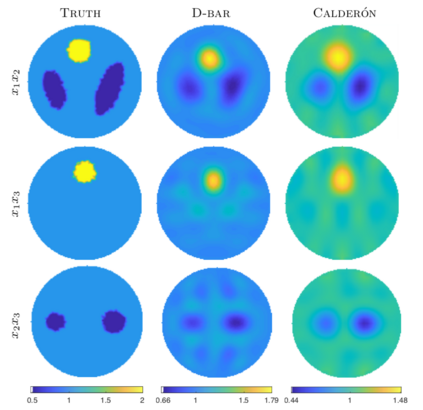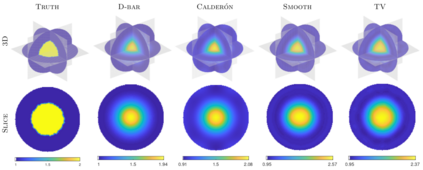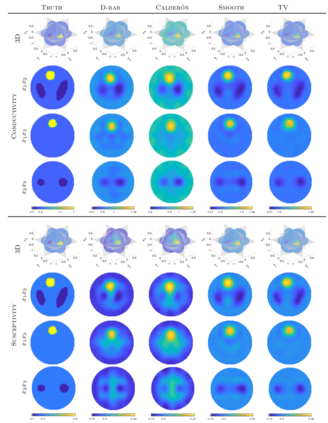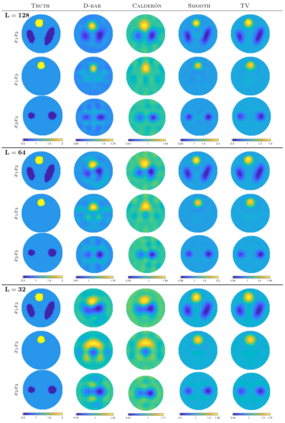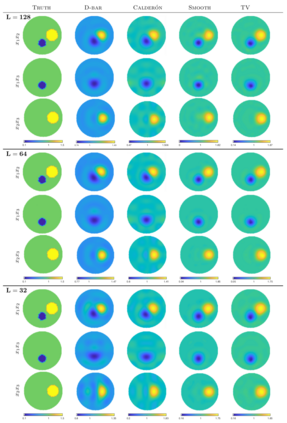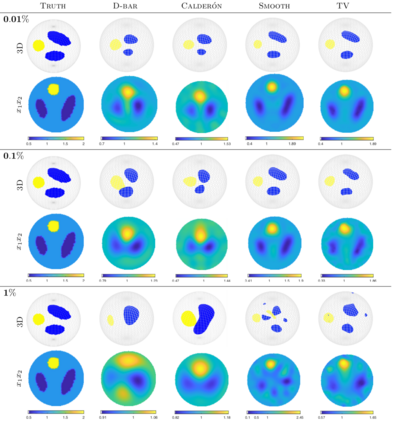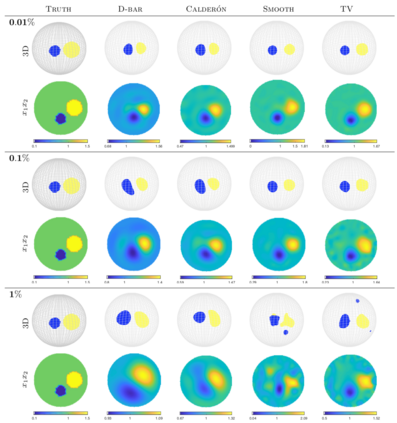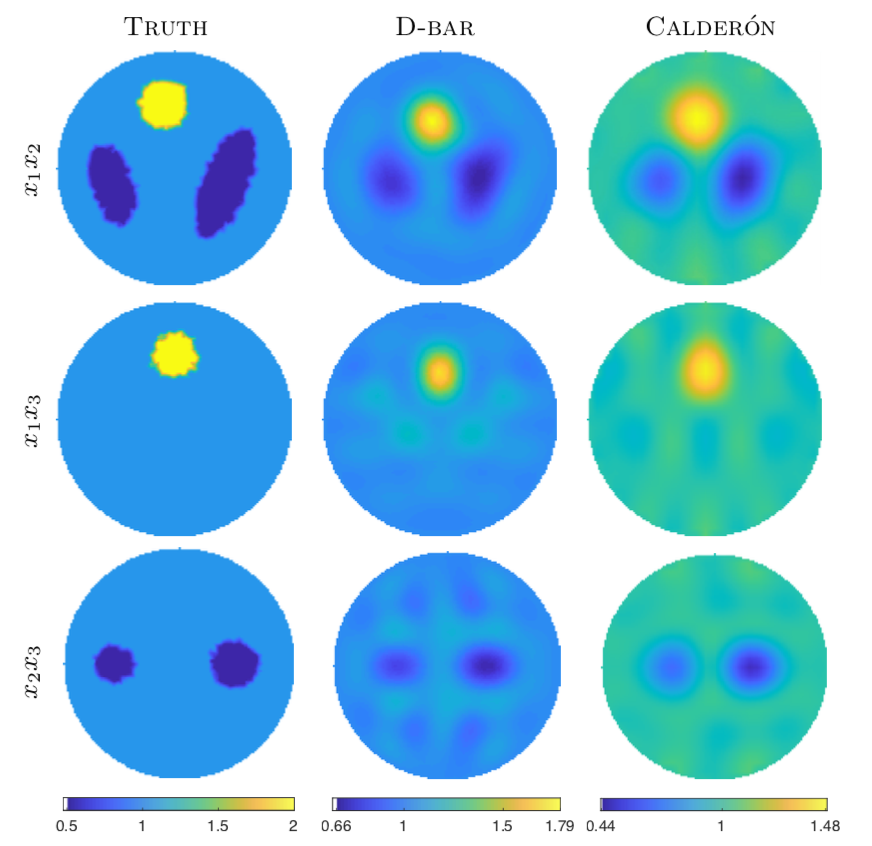The first numerical implementation of a D-bar method in 3D using electrode data is presented. Results are compared to Calder\'on's method as well as more common TV and smoothness regularization-based methods. D-bar methods are based on tailor-made non-linear Fourier transforms involving the measured current and voltage data. Low-pass filtering in the non-linear Fourier domain is used to stabilize the reconstruction process. D-bar methods have shown great promise in 2D for providing robust real-time absolute and time-difference conductivity reconstructions but have yet to be used on practical electrode data in 3D, until now. Results are presented for simulated data for conductivity and permittivity with disjoint non-radially symmetric targets on spherical domains and noisy voltage data. The 3D D-bar and Calder\'on methods are demonstrated to provide comparable quality to their 2D CGO counterparts, and hold promise for real-time reconstructions.
翻译:介绍了使用电极数据对 3D 采用 D- bar 方法的首次数字实施。 将结果与 Calder\'on 的方法以及更常用的电视和光滑规范法进行比较。 D- bar 方法基于有测量的当前和电压数据的定制非线性非线性Fourier 变异。 非线性 Fourier 域的低通过过滤用于稳定重建进程。 D- bar 方法在 2D 中显示了提供强力实时绝对性和时间差异性导电率重建的巨大希望,但至今尚未用于 3D 中的实际电极数据。 D- Bar 和 Calder\ 在线方法展示了模拟数据在球域和扰动性电流数据上与非无线性非对称目标的模拟数据结果。 3D- 巴 和 Calder- son 方法展示了向 2D CGO 对应方提供可比质量, 并承诺实时重建。

